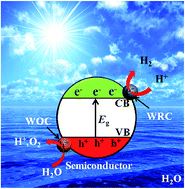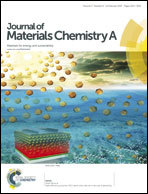Engineering heterogeneous semiconductors for solar water splitting
Abstract
There is a growing interest in the conversion of water and solar energy into clean and renewable H2 fuels using earth-abundant materials due to the depletion of fossil fuel and its serious environmental impact. This critical review highlights some key factors influencing the efficiency of heterogeneous semiconductors for solar water splitting (i.e. improved charge separation and transfer, promoted optical absorption, optimized band gap position, lowered cost and toxicity, and enhanced stability and water splitting kinetics). Moreover, different engineering strategies, such as band structure engineering, micro/nano engineering, bionic engineering, co-catalyst engineering, surface/interface engineering of heterogeneous semiconductors are summarized and discussed thoroughly. The synergistic effects of the different engineering strategies, especially for the combination of co-catalyst loading and other strategies seem to be more promising for the development of highly efficient photocatalysts. A thorough understanding of electron and hole transfer thermodynamics and kinetics at the fundamental level is also important for elucidating the key efficiency-limiting step and designing highly efficient solar-to-fuel conversion systems. In this review, we provide not only a summary of the recent progress in the different engineering strategies of heterogeneous semiconductors for solar water splitting, but also some potential opportunities for designing and optimizing solar cells, photocatalysts for the reduction of CO2 and pollutant degradation, and electrocatalysts for water splitting.

- This article is part of the themed collection: JMC A Top Picks collection: Harnessing the power of the sun

 Please wait while we load your content...
Please wait while we load your content...